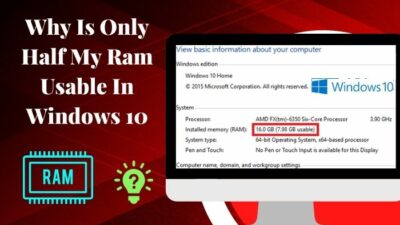Isn’t it irritating when you are doing your assignment on your recently-installed Linux mint, and suddenly your desktop keyboard starts to disconnect & connect repeatedly? Yeah, I’d probably break that keyboard in pieces. But that’s not gonna save you any more minutes.
An on-screen keyboard is your life-saver in this scenario, right?

But as any new user of the OS, you don’t know how to enable On-screen Keyboard on your Linux mint.
Don’t worry, cause in this article, I’ll share some proper and effortless ways to enable on-screen keyboards in your Linux mint.
I hope the on-screen keyboard will be your friend when your work full physical keyboard is damaged.
Don’t miss any part and precisely follow the tutorial.
Check out the easiest way how to Use Windows 11 Installation Assistant
How to Enable On-Screen Keyboards in Linux Mint?
On-screen keyboard is just like a phone/tablet keypad that allows you to type effortlessly. If you have trouble using a keyboard, an on-screen keyboard that you can control with other input devices may be a better option.
Here are the methods to enable on-screen keyboard in Linux Mint:
Use Default Settings
The on-screen keyboard is a built-in accessibility tool in most Linux distributions that can be used rather than a hardware keyboard. It is the most straightforward approach to enabling on-screen keyboard in Linux mint for beginner-level users.
Here are the steps to enable the on-screen keyboard in Linux mint:
- Click on the Linux Mint in the bottom left corner.
- Move your mouse up to All Applications.
- Go into the Accessibility settings.
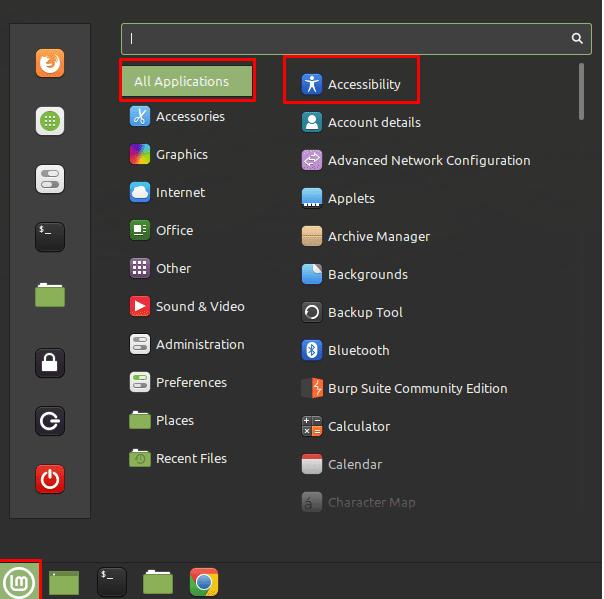
- Then switch to the Keyboard tab.
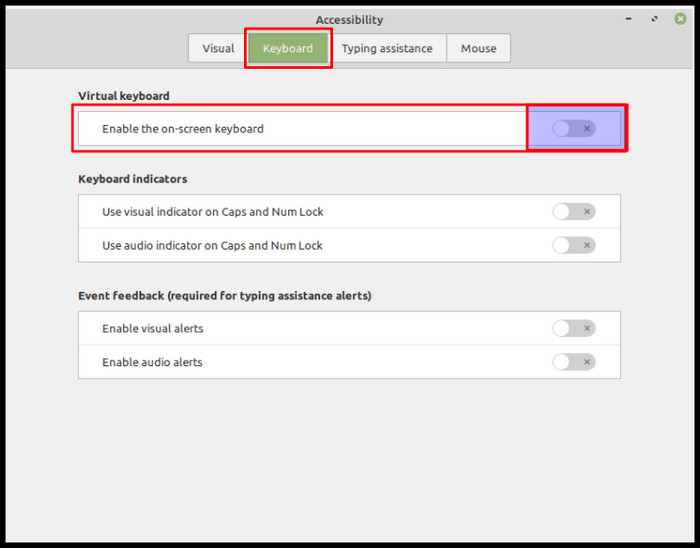
- Click the top slider, and look for Enable the on Keyboard.
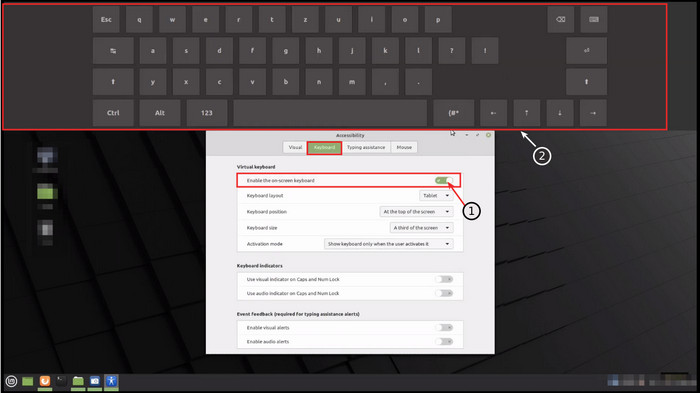
- Turn on the position.
Here’s a complete guide on how to Create RDP Shortcut Icon on Windows 10
Use Root Terminal
You can enable on-display it using your root terminal. Just follow the subsequent methods, and you’ll be able to do it on your own.
Here are the steps to enable on-screen keyboard using root Terminal:
- Click on the Linux mint in the bottom left corner.
- Search for the Terminal.
- Press Alt+Ctrl+T to open your root terminal.
Is the Onboard application installed automatically on your Linux machine? If yes, these steps are not for you.
Here are the steps to follow if the Onboard application is not installed:
- Type this command on your terminal onboard.
- Update your system using this command Sudo apt-get update.
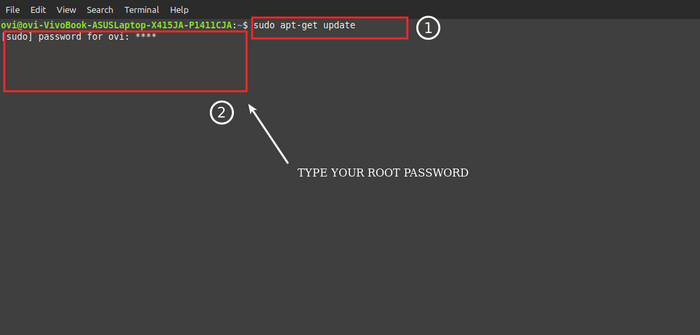
- Install onboard on your system by following this command Sudo apt install onboard.
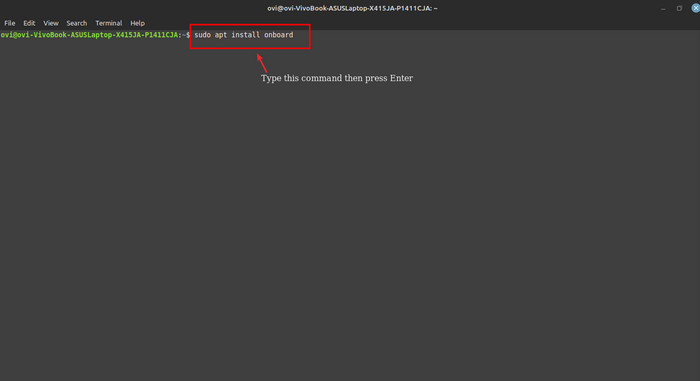
- Launch your installed application by using this command onboard, then press Enter.
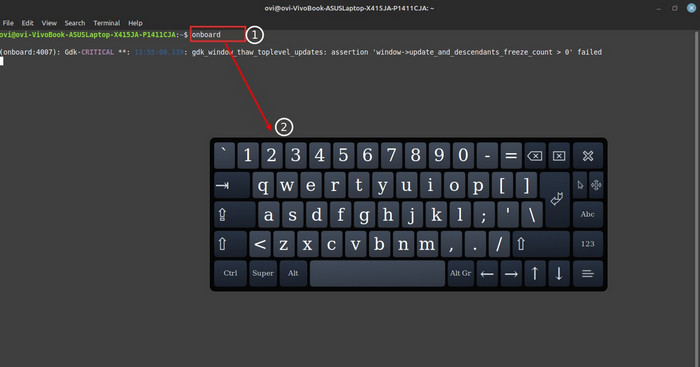
But before that, go through our epic guide on 7 Tested Solutions For Windows 11 High Disk Usage
How to Enable On-Screen Keyboards in Fedora
Most of the Linux distros have a built-in Accessibility tool called the on-screen keyboard that can be used instead of a physical keyboard.
You don’t need a touchscreen to use the on-screen keyboard. It displays a visual keyboard with all the standard keys, so you can use your mouse or another pointing device to select keys or use a physical single key or group of keys to cycle through the keys on the screen.
If you use Fedora on your machine and your keyboard is not working correctly, the on-screen keyboard would be your helping hand.
Here are the steps to enable On-screen Keyboards in Fedora:
- Move your mouse up to the corner on the screen and look for Activities. A popup screen will appear.
- Search for the settings and click on it.
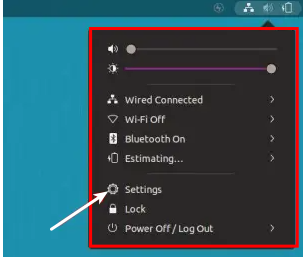
- Look for universal Access, and click on it.
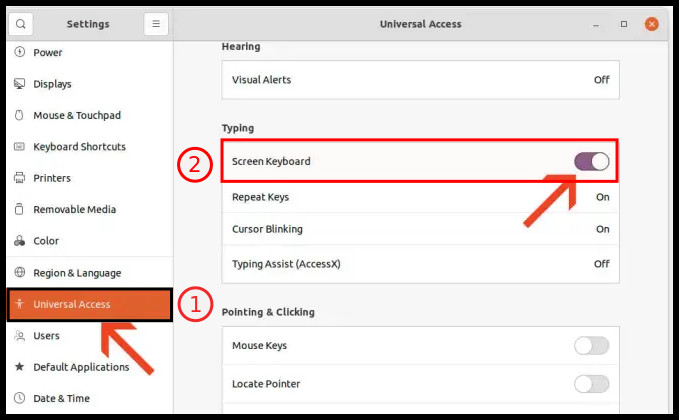
- Enable the screen keyboard button.

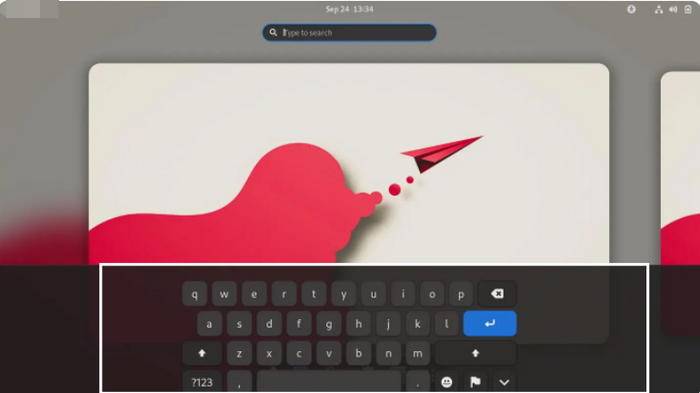
Another way is to open Terminal on your computer just by pressing alt+ctrl+t. Also, you can update your system by the following command sudo dnf update. And you can install the onboard application by typing this command sudo dnf install onboard.
How to enable on-screen Keyboard In Arch Linux?
Most Linux distros have a built-in Accessibility tool called the on-screen keyboard. But, sometimes, you need to install an on-screen keyboard application. That is called onboard.
Arch Linux is another Linux distro. The Arch Linux community developed this Linux. Arch Linux also has default on-screen keyboard settings, which are easy to access.
Here are some steps to enable on-screen keyboard in Arch Linux:
- Move your mouse up to the corner on the screen and look for Activities. Then a popup screen will appear.
- Look for the show Application and click on it.
- Search for Terminal in the search bar.
Another way to open Terminal on your computer. just press alt+ctrl+t. Pacman is Arch Linux’s default package manager. This package manager is one of the major distributing features of Arch Linux. Update your package manager by the following command: Sudo pacman Syu.
And to install the onboard application type Sudo Pacman -Syn onboard on your terminal.
Read the following section if you have any other queries regarding the on-screen keyboard in Linux mint.
Frequently Asked Questions
What are the advantages of using a screen keyboard over a physical keyboard?
You can turn it off any time you think is preferable.
Which Linux is best for programmers?
Ubuntu is one of the beautiful Linux distros for programmers. All sorts of programming languages and most developers’ ide officially support ubuntu.
How to Install On-Screen Keyboards in Kali Linux?
Go to the Application menu > Type virtual keyboard > Launch the on-screen keyboard.
Check our exclusive tutorial on turn on or off device Encryption on Windows 11.
Conclusion
I’ve enlisted various paths throughout this article for enabling an on-screen keyboard on your Linux mint and other relevant Linux distros. Following the detailed guide will help you to enable the on-display keyboard.
But, if any of the methods seem complicated to you, don’t hesitate to comment below. You can share this article with your friends who use Linux OS. We will be happy to resolve their OS issues.


